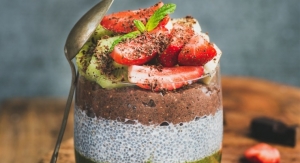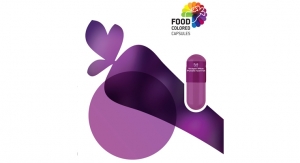By Sean Moloughney, Editor04.01.19
While most people prefer to get their nutrients from whole foods, the reality of living in the 21st century has compelled about 75% of U.S. adults to take dietary supplements, and that number has grown steadily over the past decade, according to the Council for Responsible Nutrition, which has conducted an annual survey of consumers since 2000.
Whether it’s for overall wellness, to fill nutrient gaps, or find some extra energy, consumers want safe, convenient products that can deliver on their promised benefits.
As the dietary supplement industry has advanced, product innovation has accelerated beyond trendy ingredients. Today, dosage format has a leading role to play in delivering efficacy and meeting consumer expectations.
Filling Demand
Overall, capsules remain the supplement format of choice for consumers, according to Barri Sigvertsen, marketing manager, Lonza Consumer Health & Nutrition (CHN), Morristown, NJ.
“A survey conducted by the Natural Marketing Institute (NMI) and commissioned by Lonza CHN in the U.S. last year showed that 42% of respondents preferred capsules over any other delivery format (SORD report, 2019),” she said. “Convenient, versatile, and easy-to-swallow, capsules suit a wide range of ingredients and the latest technologies mean that more than one health benefit can be addressed in a single capsule.”
Alternative formats such as gummies, soft chews, and liquids are becoming increasingly popular too, Sigvertsen added. “Gummies, for example, saw a 109% growth in preference over a seven-year period (according to SORD data). Ready-to-drink and functional beverages are also increasing in popularity, with our data showing growth rates of 13% and 28%, respectively, for these supplement formats in the last 10 years. Here, growth is coming from the younger generations primarily—namely iGen, millennials, and gen X. While alternative delivery forms are growing in popularity, consumers still value the convenience and ease of use provided by the traditional big three dosage forms, namely capsules, tablets, and softgels.”
Eric Meppem, co-founder and commercial director of Australia-based Pharmako Biotechnologies, a partner of Gencor, Irvine, CA, noted that popular dosage formats vary not only between country or market, but also between channel/segment and demographic.
In Australia, softgels are the predominant dosage format, he said, while two-piece hard capsules are dominant in North America, though others like effervescent tablets are increasing. “In South East Asia, two-piece hard capsules are predominant, but beverages, shots, and liquids are popular. In Japan, shots and small beverages are very popular in the ‘recovery’ market. However, this is changing as international trade means consumers in different markets now request new and various formats.”
Michal Heger, PhD, chief formulation officer and co-founder of Nurish.Me, which offers evidence-based supplement formulations, agreed that while solid dose products like tablets and gelcaps currently comprise the most popular formats, alternatives are on the rise due to a range of factors, including convenience, perceived efficacy, and speed of efficacy.
“Elderly people and young people experience the most problems with swallowing solid doses, particularly tablets and to a lesser degree softgels,” he said. “To tailor to these groups, alternatives have been developed that include lozenges, effervescents, chewables, powders, liquids, and gummies.”
Selecting the Right Dose
The selection of dosage form is generally based on several factors, according to Heger, including functionality (absorption, bioavailability, and stability), suitability of ingredients (chemical, form, physical, pH, solubility, etc.), availability of ingredients/excipients, costs, marketing preferences, administration frequency, excipients, convenience, and transportability.
According to Meppem, format preference has traditionally been based on product position, but this is also beginning to change as brands look to differentiate and try to provide consumers variety and convenience. These changes have been facilitated by advances in delivery systems and formats.
“As regular nutraceutical or dietary supplements consumers suffer ‘pill fatigue,’ the traditional formats are no longer the only way they wish to take natural medicines,” Meppem said. “New technologies such as LipiSperse, a cold-water dispersible technology, allow ingredients which didn’t work in certain formats (e.g., curcumin into a ready-to-mix, or CoQ10 or resveratrol into an effervescent tablet) to be used in new ways. This will increase usage and compliance.”
The motivators behind supplement purchasing decisions vary from person to person, Sigvertsen said, with influencing factors including age, frequency of supplement use, and health concern. “Convenience, ease of use, safety, and efficacy are the top priorities of supplement users, whatever their health goal,” she noted.
Modern Challenges
Product formulation is a complicated endeavor that must address and balance a confluence of factors, especially for sensitive ingredients.
“Developing supplements containing moisture- or acid-sensitive ingredients, such as probiotics, can be a complex process,” said Sigvertsen. “For optimal efficacy, it is important to protect the probiotics when passing through the low pH conditions of the stomach before reaching the intestines. Probiotics are also hygroscopic, meaning that early activation may be triggered by environmental humidity or the water content of the delivery system. The dosage form therefore plays a critical role in achieving maximum shelf-life, alongside ensuring that the probiotics reach the appropriate site in the gastrointestinal tract.”
Other challenges commonly faced by product developers include controlling the release profile of active ingredients and creating combination products that address more than one health condition in a single supplement, Sigvertsen added.
The most difficult ingredients are those that need to stay alive, said Heger. “Beneficial enteral bacteria and yeasts found in probiotics are a challenging class because they require special conditions and processing to sustain their viability. Next, ingredients that are prone to oxidation are cumbersome. For example, omega-3 fatty acids rapidly oxidize upon exposure to atmospheric oxygen. Even when pure DHA is stored in an oily suspension or organic solvent under a low-oxygen atmosphere, it will eventually oxidize and lose its functionality.”
Bioavailability is another challenge for manufacturers, said Sigvertsen. For example, curcumin is currently a very popular ingredient, but it usually has very poor absorption rates. “Liquid forms typically offer improved bioavailability, yet formulating with these ingredients can be difficult.”
Heger agreed that certain products, like curcumin, require special formulation to ensure absorption in the gut and high bioavailability. “Curcumin can be ingested in the order of several grams with zero molecules ending up in the bloodstream. So ways must be found to increase bioavailability. Using nanotechnology such as liposomes or micelles is a viable option, but needs to be balanced against the fact that curcumin degrades in water at pH > 6 (typically the solvent for micelles and liposomes), and degrades when exposed to light or heat.”
Most lipophilic (oil-soluble or oil-based nutrients) are challenging as the human gastrointestinal tract is an aqueous environment, noted Meppem. “Lipophilic actives are generally poorly absorbed and are not stored in the body.
“Curcumin is correctly recognized as one of the most challenging ingredients,” said Meppem. “It is not only lipophilic, but it is extremely hydrophobic; it literally hates water, and it agglomerates (sticks together) when in contact with water. This leads to very poor absorption, and limited functionality. Pharmako’s novel cold-water dispersion technology LipiSperse overcomes both these challenges.”
New Solutions
Enhancing bioavailability is often critical to product success. “Utilizing dispersion technologies helps make products easier to take, smaller, more convenient, faster acting, and more efficacious,” Meppem said. Preventing hydrophobic particles from agglomerating increases the specific surface area of the material in the human gastrointestinal tract, allowing better absorption into the bloodstream, he added.
By creating powders that are water dispersible, LipiSperse allows ingredients to be used in novel formats. “By improving the absorption of nutrients, we also accelerate the onset of action, meaning faster results for consumers. Improved absorption can also mean decreased dosages, and improved compliance.”
Lonza CHN offers a range of capsules and dosage form technologies to overcome formulation challenges, according to Sigvertsen. “Our Licaps liquid-filled capsules have been specially designed for the secure containment of liquid fills, while our DRcaps capsules support probiotic supplement manufacturers in overcoming challenges with stability and strain survival. These hypromellose (HPMC) capsules are made from acid-resistant polymers to protect probiotics in the low pH stomach environment, as well as providing a modified release to allow for complete dissolution in the intestine.”
Lonza’s other innovative dosage form technologies include beadlets, which enable product developers to formulate vitamins and minerals into time-release profiles to ensure they are delivered to the body throughout the day, she added. “Suitable for use in capsules, ready-to-mix blends, and functional foods, beadlets also facilitate the combination of ingredients that are typically incompatible to maximize nutritional benefits. Tablet-in-capsule and lipid multi-particulate (LMP) technologies are further broadening the delivery systems now available to manufacturers.”
Nanotechnology, the science dealing with matter on the molecular scale, is already used in cutting-edge pharmaceutical drugs. Now, nanoparticulate carrier systems are revolutionizing the nutraceuticals industry, according to Heger, who has extensive experience developing targeted nanomedicines, including scientifically validated liposomal technology platforms to potentially treat diseases such as cancer. “The applications of nanotechnology in the food supplement industry are very broad.”
Because liposomal and micellar carrier systems are also suitable for oral delivery, Heger expanded his research to liposomal and micellar phytochemicals that could be marketed as dietary supplements. “Based on extensive research we believed that certain naturally derived compounds could be formulated in nanocarriers and rendered more effective.”
The most common carrier platforms for dietary supplements are liposomes, micelles, and solid lipid nanoparticles. “The first applicability of nanotechnology is centered on solubility. Fat-soluble compounds such as vitamins A, D, E and K, curcumin, and cannabinoids are not water soluble. In fact, many functional phytochemicals exhibit poor water solubility,” Heger said. “By formulating fat-soluble compounds into water-soluble carriers, the compounds become water-soluble and more compatible with human physiology.”
Nanotechnology also improves stability and bioavailability, he added. “Some compounds are prone to breakdown at low pH or even in water. Encapsulation can reduce or even prevent the degradation of compounds.” Nanoformulations can increase the uptake of the encapsulants in the intestines and thereby increase the compound’s bioavailability, he added. “The exact mechanism behind augmented bioavailability of nanoformulated compounds versus their ‘bare counterparts’ is not entirely understood and depends on the type of nanocarrier system, but the general phenomenon has been proven in numerous studies.”
Heger acknowledged that some people believe nanotechnology can be dangerous. “The thought behind the danger is that nanoencapsulation could theoretically change the pharmacokinetics and safety of the encapsulated compound(s). Although this is true for certain molecular complexes, especially micelles comprised of synthetic materials, it does not apply to all nanoformulations.”
Potential hazards have led to legislative roadblocks around the world, “with little discrimination between the types of nanotechnology platforms,” he continued. “Consequently, compounds that would normally not be regulated become regulated because they are encapsulated in a nanoparticle. For liposomes, which typically range from 80-500 nanometers in diameter, the regulatory implications are particularly unjustifiable.”
In the case of dietary supplements, liposomes are composed of phospholipids that are generally obtained from soy, egg, or sunflower. The liposomes are processed in the human gut in the same manner as the food sources from which they are derived. They are therefore innocuous to human health, Heger said. “Although the bioavailability of most encapsulated compounds is increased by liposomal encapsulation, it is in fact the dosage that should be properly regulated, not the nanotechnology itself.”
Using the company’s CoreCumin as an example, he explained, “Our proprietary platform technology is based on micelles. Micellation seems to substantially improve the absorption of curcumin, which has resulted in a product that has helped many people with their health at much lower dosages than powder-containing capsules.”
The Clean Label Path
Clean label is a concept yet to be standardized in today’s dietary supplement industry. “To Lonza CHN, it’s a movement which is characterized by fewer, more recognizable ingredients and greater transparency of how products are sourced and made,” said Sigvertsen. “As consumers become more educated, the trend continues to evolve and is now expanding, from demand for naturally sourced products, to also include sustainable and ethical (values-based) considerations.”
In fact, according to a 2018 survey conducted by NMI and commissioned by Lonza CHN in the U.S., there was a 97% growth over a five-year period in the proportion of supplement users indicating that an environmentally responsible brand is a very important factor in their purchasing decision, she noted.
According to Meppem, “clean label” can have a range of meanings depending on individual perspective. “We recognize this as a product of consumers wanting less processed foods and medicines, and a level of misunderstanding of ingredients.”
Supplement manufacturers have had to adapt to meet increased consumer demand for products that are from natural sources, organic, or non-GMO certified, Sigvertsen added. “This is changing the status quo and putting the delivery format at the heart of achieving a clean label positioning,” she said. “Capsules often provide a solution as they can reduce the need for unnecessary excipients in formulations, as well as not requiring the use of taste-masking coatings. Innovations in plant-based capsules, in particular, are opening up opportunities for supplement brands. Lonza’s new Vcaps Plus Purple Carrot capsule, for example, consists of a high-performance capsule shell made using HPMC and water only that is naturally colored using a colorant derived from purple carrot.”
When developing clean label supplements, external certifications can also help to make products even more attractive to consumers, Sigvertsen noted. “Lonza recently announced that its DRcaps capsules have been verified as non-GMO by the Non-GMO Project, completing the company’s unrivalled vegetarian hard capsule portfolio and giving an additional clean label option to its customers. As an integrated solutions provider, Lonza is also a founding member of the Clean Label Alliance, which works to support and facilitate clean label programs and manufacturing across the dietary supplements landscape.”
Whether it’s for overall wellness, to fill nutrient gaps, or find some extra energy, consumers want safe, convenient products that can deliver on their promised benefits.
As the dietary supplement industry has advanced, product innovation has accelerated beyond trendy ingredients. Today, dosage format has a leading role to play in delivering efficacy and meeting consumer expectations.
Filling Demand
Overall, capsules remain the supplement format of choice for consumers, according to Barri Sigvertsen, marketing manager, Lonza Consumer Health & Nutrition (CHN), Morristown, NJ.
“A survey conducted by the Natural Marketing Institute (NMI) and commissioned by Lonza CHN in the U.S. last year showed that 42% of respondents preferred capsules over any other delivery format (SORD report, 2019),” she said. “Convenient, versatile, and easy-to-swallow, capsules suit a wide range of ingredients and the latest technologies mean that more than one health benefit can be addressed in a single capsule.”
Alternative formats such as gummies, soft chews, and liquids are becoming increasingly popular too, Sigvertsen added. “Gummies, for example, saw a 109% growth in preference over a seven-year period (according to SORD data). Ready-to-drink and functional beverages are also increasing in popularity, with our data showing growth rates of 13% and 28%, respectively, for these supplement formats in the last 10 years. Here, growth is coming from the younger generations primarily—namely iGen, millennials, and gen X. While alternative delivery forms are growing in popularity, consumers still value the convenience and ease of use provided by the traditional big three dosage forms, namely capsules, tablets, and softgels.”
Eric Meppem, co-founder and commercial director of Australia-based Pharmako Biotechnologies, a partner of Gencor, Irvine, CA, noted that popular dosage formats vary not only between country or market, but also between channel/segment and demographic.
In Australia, softgels are the predominant dosage format, he said, while two-piece hard capsules are dominant in North America, though others like effervescent tablets are increasing. “In South East Asia, two-piece hard capsules are predominant, but beverages, shots, and liquids are popular. In Japan, shots and small beverages are very popular in the ‘recovery’ market. However, this is changing as international trade means consumers in different markets now request new and various formats.”
Michal Heger, PhD, chief formulation officer and co-founder of Nurish.Me, which offers evidence-based supplement formulations, agreed that while solid dose products like tablets and gelcaps currently comprise the most popular formats, alternatives are on the rise due to a range of factors, including convenience, perceived efficacy, and speed of efficacy.
“Elderly people and young people experience the most problems with swallowing solid doses, particularly tablets and to a lesser degree softgels,” he said. “To tailor to these groups, alternatives have been developed that include lozenges, effervescents, chewables, powders, liquids, and gummies.”
Selecting the Right Dose
The selection of dosage form is generally based on several factors, according to Heger, including functionality (absorption, bioavailability, and stability), suitability of ingredients (chemical, form, physical, pH, solubility, etc.), availability of ingredients/excipients, costs, marketing preferences, administration frequency, excipients, convenience, and transportability.
According to Meppem, format preference has traditionally been based on product position, but this is also beginning to change as brands look to differentiate and try to provide consumers variety and convenience. These changes have been facilitated by advances in delivery systems and formats.
“As regular nutraceutical or dietary supplements consumers suffer ‘pill fatigue,’ the traditional formats are no longer the only way they wish to take natural medicines,” Meppem said. “New technologies such as LipiSperse, a cold-water dispersible technology, allow ingredients which didn’t work in certain formats (e.g., curcumin into a ready-to-mix, or CoQ10 or resveratrol into an effervescent tablet) to be used in new ways. This will increase usage and compliance.”
The motivators behind supplement purchasing decisions vary from person to person, Sigvertsen said, with influencing factors including age, frequency of supplement use, and health concern. “Convenience, ease of use, safety, and efficacy are the top priorities of supplement users, whatever their health goal,” she noted.
Modern Challenges
Product formulation is a complicated endeavor that must address and balance a confluence of factors, especially for sensitive ingredients.
“Developing supplements containing moisture- or acid-sensitive ingredients, such as probiotics, can be a complex process,” said Sigvertsen. “For optimal efficacy, it is important to protect the probiotics when passing through the low pH conditions of the stomach before reaching the intestines. Probiotics are also hygroscopic, meaning that early activation may be triggered by environmental humidity or the water content of the delivery system. The dosage form therefore plays a critical role in achieving maximum shelf-life, alongside ensuring that the probiotics reach the appropriate site in the gastrointestinal tract.”
Other challenges commonly faced by product developers include controlling the release profile of active ingredients and creating combination products that address more than one health condition in a single supplement, Sigvertsen added.
The most difficult ingredients are those that need to stay alive, said Heger. “Beneficial enteral bacteria and yeasts found in probiotics are a challenging class because they require special conditions and processing to sustain their viability. Next, ingredients that are prone to oxidation are cumbersome. For example, omega-3 fatty acids rapidly oxidize upon exposure to atmospheric oxygen. Even when pure DHA is stored in an oily suspension or organic solvent under a low-oxygen atmosphere, it will eventually oxidize and lose its functionality.”
Bioavailability is another challenge for manufacturers, said Sigvertsen. For example, curcumin is currently a very popular ingredient, but it usually has very poor absorption rates. “Liquid forms typically offer improved bioavailability, yet formulating with these ingredients can be difficult.”
Heger agreed that certain products, like curcumin, require special formulation to ensure absorption in the gut and high bioavailability. “Curcumin can be ingested in the order of several grams with zero molecules ending up in the bloodstream. So ways must be found to increase bioavailability. Using nanotechnology such as liposomes or micelles is a viable option, but needs to be balanced against the fact that curcumin degrades in water at pH > 6 (typically the solvent for micelles and liposomes), and degrades when exposed to light or heat.”
Most lipophilic (oil-soluble or oil-based nutrients) are challenging as the human gastrointestinal tract is an aqueous environment, noted Meppem. “Lipophilic actives are generally poorly absorbed and are not stored in the body.
“Curcumin is correctly recognized as one of the most challenging ingredients,” said Meppem. “It is not only lipophilic, but it is extremely hydrophobic; it literally hates water, and it agglomerates (sticks together) when in contact with water. This leads to very poor absorption, and limited functionality. Pharmako’s novel cold-water dispersion technology LipiSperse overcomes both these challenges.”
New Solutions
Enhancing bioavailability is often critical to product success. “Utilizing dispersion technologies helps make products easier to take, smaller, more convenient, faster acting, and more efficacious,” Meppem said. Preventing hydrophobic particles from agglomerating increases the specific surface area of the material in the human gastrointestinal tract, allowing better absorption into the bloodstream, he added.
By creating powders that are water dispersible, LipiSperse allows ingredients to be used in novel formats. “By improving the absorption of nutrients, we also accelerate the onset of action, meaning faster results for consumers. Improved absorption can also mean decreased dosages, and improved compliance.”
Lonza CHN offers a range of capsules and dosage form technologies to overcome formulation challenges, according to Sigvertsen. “Our Licaps liquid-filled capsules have been specially designed for the secure containment of liquid fills, while our DRcaps capsules support probiotic supplement manufacturers in overcoming challenges with stability and strain survival. These hypromellose (HPMC) capsules are made from acid-resistant polymers to protect probiotics in the low pH stomach environment, as well as providing a modified release to allow for complete dissolution in the intestine.”
Lonza’s other innovative dosage form technologies include beadlets, which enable product developers to formulate vitamins and minerals into time-release profiles to ensure they are delivered to the body throughout the day, she added. “Suitable for use in capsules, ready-to-mix blends, and functional foods, beadlets also facilitate the combination of ingredients that are typically incompatible to maximize nutritional benefits. Tablet-in-capsule and lipid multi-particulate (LMP) technologies are further broadening the delivery systems now available to manufacturers.”
Nanotechnology, the science dealing with matter on the molecular scale, is already used in cutting-edge pharmaceutical drugs. Now, nanoparticulate carrier systems are revolutionizing the nutraceuticals industry, according to Heger, who has extensive experience developing targeted nanomedicines, including scientifically validated liposomal technology platforms to potentially treat diseases such as cancer. “The applications of nanotechnology in the food supplement industry are very broad.”
Because liposomal and micellar carrier systems are also suitable for oral delivery, Heger expanded his research to liposomal and micellar phytochemicals that could be marketed as dietary supplements. “Based on extensive research we believed that certain naturally derived compounds could be formulated in nanocarriers and rendered more effective.”
The most common carrier platforms for dietary supplements are liposomes, micelles, and solid lipid nanoparticles. “The first applicability of nanotechnology is centered on solubility. Fat-soluble compounds such as vitamins A, D, E and K, curcumin, and cannabinoids are not water soluble. In fact, many functional phytochemicals exhibit poor water solubility,” Heger said. “By formulating fat-soluble compounds into water-soluble carriers, the compounds become water-soluble and more compatible with human physiology.”
Nanotechnology also improves stability and bioavailability, he added. “Some compounds are prone to breakdown at low pH or even in water. Encapsulation can reduce or even prevent the degradation of compounds.” Nanoformulations can increase the uptake of the encapsulants in the intestines and thereby increase the compound’s bioavailability, he added. “The exact mechanism behind augmented bioavailability of nanoformulated compounds versus their ‘bare counterparts’ is not entirely understood and depends on the type of nanocarrier system, but the general phenomenon has been proven in numerous studies.”
Heger acknowledged that some people believe nanotechnology can be dangerous. “The thought behind the danger is that nanoencapsulation could theoretically change the pharmacokinetics and safety of the encapsulated compound(s). Although this is true for certain molecular complexes, especially micelles comprised of synthetic materials, it does not apply to all nanoformulations.”
Potential hazards have led to legislative roadblocks around the world, “with little discrimination between the types of nanotechnology platforms,” he continued. “Consequently, compounds that would normally not be regulated become regulated because they are encapsulated in a nanoparticle. For liposomes, which typically range from 80-500 nanometers in diameter, the regulatory implications are particularly unjustifiable.”
In the case of dietary supplements, liposomes are composed of phospholipids that are generally obtained from soy, egg, or sunflower. The liposomes are processed in the human gut in the same manner as the food sources from which they are derived. They are therefore innocuous to human health, Heger said. “Although the bioavailability of most encapsulated compounds is increased by liposomal encapsulation, it is in fact the dosage that should be properly regulated, not the nanotechnology itself.”
Using the company’s CoreCumin as an example, he explained, “Our proprietary platform technology is based on micelles. Micellation seems to substantially improve the absorption of curcumin, which has resulted in a product that has helped many people with their health at much lower dosages than powder-containing capsules.”
The Clean Label Path
Clean label is a concept yet to be standardized in today’s dietary supplement industry. “To Lonza CHN, it’s a movement which is characterized by fewer, more recognizable ingredients and greater transparency of how products are sourced and made,” said Sigvertsen. “As consumers become more educated, the trend continues to evolve and is now expanding, from demand for naturally sourced products, to also include sustainable and ethical (values-based) considerations.”
In fact, according to a 2018 survey conducted by NMI and commissioned by Lonza CHN in the U.S., there was a 97% growth over a five-year period in the proportion of supplement users indicating that an environmentally responsible brand is a very important factor in their purchasing decision, she noted.
According to Meppem, “clean label” can have a range of meanings depending on individual perspective. “We recognize this as a product of consumers wanting less processed foods and medicines, and a level of misunderstanding of ingredients.”
Supplement manufacturers have had to adapt to meet increased consumer demand for products that are from natural sources, organic, or non-GMO certified, Sigvertsen added. “This is changing the status quo and putting the delivery format at the heart of achieving a clean label positioning,” she said. “Capsules often provide a solution as they can reduce the need for unnecessary excipients in formulations, as well as not requiring the use of taste-masking coatings. Innovations in plant-based capsules, in particular, are opening up opportunities for supplement brands. Lonza’s new Vcaps Plus Purple Carrot capsule, for example, consists of a high-performance capsule shell made using HPMC and water only that is naturally colored using a colorant derived from purple carrot.”
When developing clean label supplements, external certifications can also help to make products even more attractive to consumers, Sigvertsen noted. “Lonza recently announced that its DRcaps capsules have been verified as non-GMO by the Non-GMO Project, completing the company’s unrivalled vegetarian hard capsule portfolio and giving an additional clean label option to its customers. As an integrated solutions provider, Lonza is also a founding member of the Clean Label Alliance, which works to support and facilitate clean label programs and manufacturing across the dietary supplements landscape.”





















